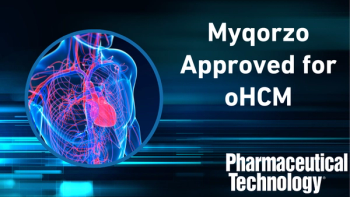
AQbD, the Evolution of Pharmacopoeial Standards?
MHRA has launched a consultation to gain a greater understanding of the potential application of AQbD in pharmacopoeial standards and the future of medicines standards.
The Medicines and Healthcare products Regulatory Agency (MHRA) has launched a consultation to gather views on the application of Analytical Quality by Design (AQbD) principles to pharmacopoeial standards in the British Pharmacopoeia (BP). This consultation considers the value of providing additional method understanding within monographs and of including method criteria, such as the Analytical Target Profile (ATP), to complement pharmacopoeial methods.
Why is MHRA investigating AQbD?
The MHRA is committed to ensuring the quality of medicines in the United Kingdom through its activities in the development of public quality standards. These standards are published in the BP and enable users to make an objective assessment in relation to the quality of a material. Pharmacopoeial standards are a key component of an interlinked regulatory framework, which ensures that safe and efficacious treatments are available to patients.
Pharmacopoeial standards evolve with advances in manufacturing science and technology. Therefore, the MHRA is exploring how AQbD principles may be applied to pharmacopoeial standards, in collaboration with other regulatory peers and industry experts, to help shape the future of pharmacopoeial standards.
What work has been performed that has led to this consultation?
The MHRA’s case study applied AQbD approaches to the development and verification of a high-performance liquid chromatography (HPLC) based pharmacopoeial Assay procedure for atorvastatin tablets.
Several different techniques to build method knowledge were used to give an assurance of the procedure’s robustness and crucially for the pharmacopoeia, ensure suitability of the method for the range of products available to patients. These included:
- Risk assessment tools (FMEA and Ishikawa fishbone analysis) to identify risks associated with the method and the formulations.
- Design-of-Experiments (DoE) to investigate the robustness to small, deliberate changes in the method conditions.
- A desirability plot to further understand where the edges of failure lie.
- Predefined method criteria (Analytical Target Profile [ATP]) used to support development of the method and verify the methods fitness for purpose.
The case study confirmed that the application of the above techniques through closer collaboration with the manufacturer has the potential to deliver benefits to the users of the BP and aid the evolution of the pharmacopoeia. The learnings from the case study have come together to shape the ongoing consultation, which consists of a project summary, a survey with feedback form, and visual examples of the application of these principles.
A technical report of this case study, detailing the laboratory based investigations to date, is also published with the consultation on the UK government’s website: “
Key outcomes of the project to date
To date, the project has revealed the following key issues:
- The importance of effective knowledge transfer between collaborating manufacturers and the pharmacopoeia was highlighted throughout the project. Prior knowledge is a key theme in the
ICH Q8 guidance for pharmaceutical development, such knowledge is gained in abundance during the development of an analytical method (1). Effective transfer of this knowledge was achieved through access to the manufacturer’s method and validation reports, and put into practice through a method walkthrough undertaken with scientists from the manufacturer and the Agency’s laboratory.
- A structured risk assessment is a key tool when developing a pharmacopoeial monograph because it ensures that potential differences between the products available to patients are considered. Making sure that all risks are identified and either mitigated or investigated results in a pharmacopoeial method that is fit for its intended purpose and suitably robust to new products.
- The formation of an ATP can be detailed and complex to meet its intended purpose, and should be designed based on formulation, product specifications, and the analyte(s) of interest.
- The ATP can provide suitable criteria for demonstrating a method’s fitness for purpose and has the potential to enable a user of the pharmacopoeia to efficiently compare their own procedure for equivalence to that of the monograph.
- Statistical analysis of the data being generated in the assessment of a method to satisfy the pre-defined criteria of an ATP should be robust, fit for purpose, and suitably rationalised.
Next steps
Through the consultation the Agency aims to understand stakeholder views on the future for the quality of medicines, the level of expertise and experience with AQbD, views on how AQbD could be useful for standards, and comments on the example approaches. Pharma industry participants are invited to provide their individual opinions as well as coordinated organisational responses. A dedicated inbox has been set up to support this consultation so please direct any comments or queries to
The consultation closes on the 31 August 2019, after which the Agency will compile and review responses to define policy on the application of AQbD principles and the evolution of pharmacopoeial standards.
Reference
1. ICH, Q8 (R2) Pharmaceutical Development, Step 4 version (August 2009).
Newsletter
Get the essential updates shaping the future of pharma manufacturing and compliance—subscribe today to Pharmaceutical Technology and never miss a breakthrough.




